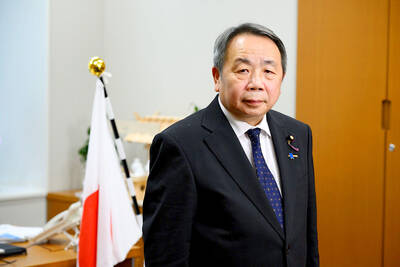Taiwanese immigrants in the US are known as "model immigrants" among immigration authorities there because most of them have high levels of education and are white-collar workers, Overseas Compatriot Affairs Commission (OCAC) Chairwoman Chang Fu-mei (
Chang made the remarks yesterday at a press conference to announce the results of a survey of Taiwanese immigrants in the US, home to 55 percent of all Taiwanese emigrants, according to a 2003 commission survey.
The commission serves the interests of Taiwanese abroad.
"Many of us in the commission have resided in the US for many years, so we're not surprised at the [positive] results of this year's survey," she said.
The survey, which is conducted every three years, is meant to gauge immigration trends among Taiwanese in the US.
Based on mail and Internet-based questionnaires filled out by nearly 1,400 Taiwanese immigrants in the US last year, the survey found that more than 70 percent of Taiwanese immigrants have college or university degrees, with more than 35 percent having doctorates.
Seventy percent of Taiwanese immigrants in the US who are employed there work in white-collar jobs, and earn higher-than-average salaries, the survey showed.
The results are compiled in The 2006 Investigative Report on Taiwanese in the US.
"Taiwanese immigrants don't create problems for the US government," Chang told the news conference, which was held to release both the survey and the report.
The report said that more than half of those surveyed reported that they had "absolutely no trouble" adjusting to life in the US; those who did cited language barriers, economic troubles, their children's education and residency status, among other concerns, as the sources of their problems in the US.
Despite getting along in the US overall, more Taiwanese immigrants there "are considering returning to Taiwan" than ever before, the report said.
According to the previous survey in 2003, 27 percent of respondents said that they would consider coming back to live, while nearly 33 percent of respondents in the latest survey would consider returning.
Chang said Taiwan's relatively good healthcare system and the desire to "come home" were behind the trend.
Some 600,000 Taiwanese reside in the US, she said, adding that that figure was a "conservative estimate."

A strong continental cold air mass is to bring pollutants to Taiwan from tomorrow, the Ministry of Environment said today, as it issued an “orange” air quality alert for most of the country. All of Taiwan except for Hualien and Taitung counties is to be under an “orange” air quality alert tomorrow, indicating air quality that is unhealthy for sensitive groups. In China, areas from Shandong to Shanghai have been enveloped in haze since Saturday, the ministry said in a news release. Yesterday, hourly concentrations of PM2.5 in these areas ranged from 65 to 160 micrograms per cubic meter (mg/m³), and pollutants were

Taiwan’s armed forces have established response protocols for a wide range of sudden contingencies, including the “Wan Chun Plan” to protect the head of state, the Ministry of Defense (MND) said today. After US President Donald Trump on Saturday launched a series of airstrikes in Venezuela and kidnapped Venezuelan President Nicolas Maduro, concerns have been raised as to whether China would launch a similar “decapitation strike” on Taiwan. The armed forces regularly coordinate with relevant agencies and practice drills to ensure preparedness for a wide range of scenarios, Vice Minister of National Defense Hsu Szu-chien (徐斯儉) told reporters before a

EVA Airways on Saturday said that it had suspended a pilot and opened an investigation after he allegedly lost his temper and punched the first officer several times as their plane was taxiing before takeoff at Los Angeles International Airport. According to a report published on Thursday by The Reporter, the incident occurred after the flight’s Malaysian first officer tried to warn the Taiwanese pilot, surnamed Wen (文), that he was taxiing faster than the speed limit of 30 knots (55.6kph). After alerting the pilot several times without response, the first officer manually applied the brakes in accordance with standard operating

Japanese Councilor Hei Seki (石平) on Wednesday said that he plans to visit Taiwan, saying that would “prove that Taiwan is an independent country and does not belong to China.” Seki, a member of the Japan Innovation Party, was born in Chengdu in China’s Sichuan Province and became a naturalized Japanese in 2007. He was elected to the House of Concilors last year. His views on the Chinese Communist Party (CCP) — espoused in a series of books on politics and history — prompted Beijing to sanction him, including barring Seki from traveling to China. Seki wrote on X that he intends